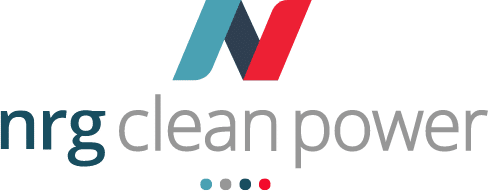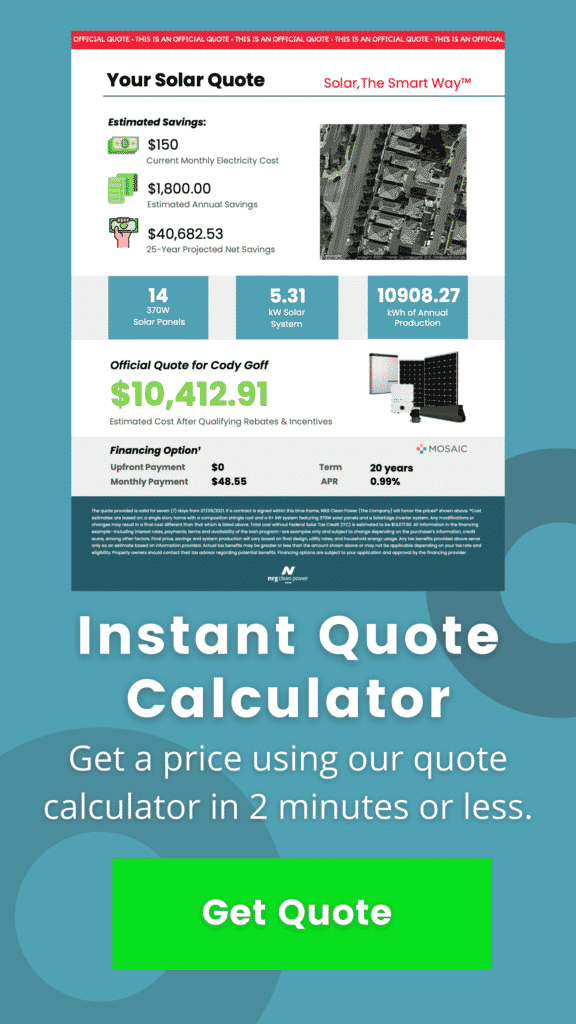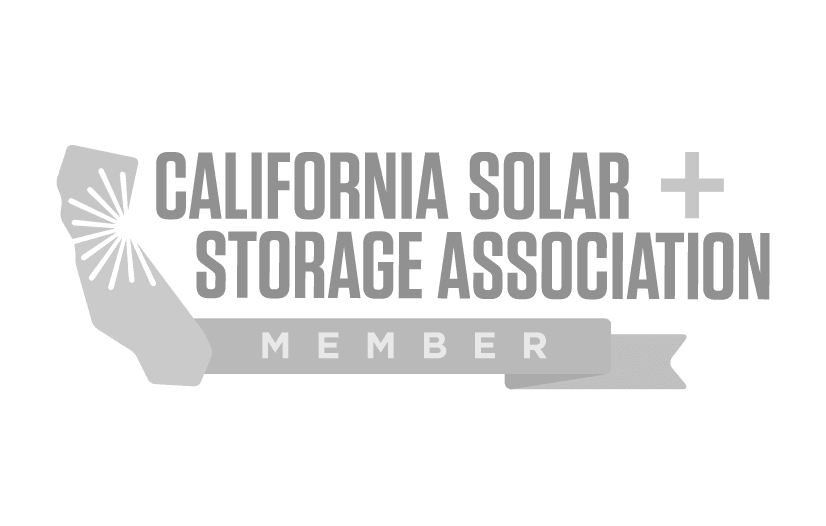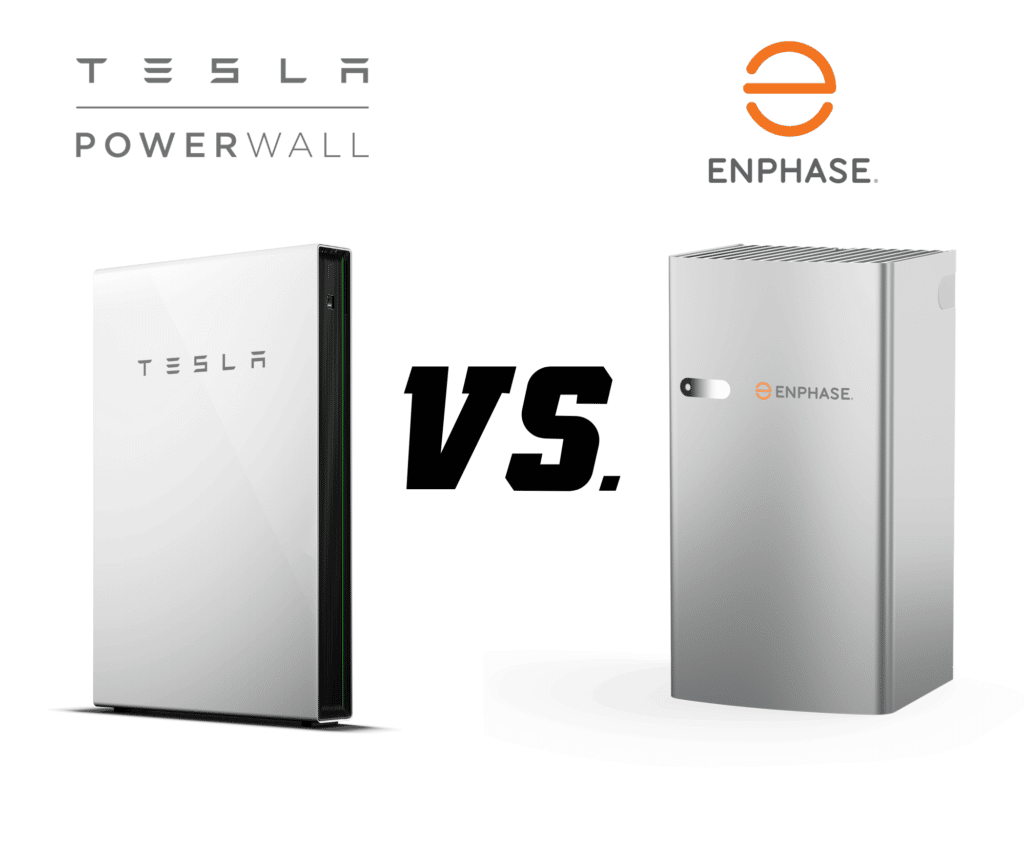
The Tesla Powerwall and Enphase Battery are two of the leading home energy storage systems on the market today.
Both offer homeowners the ability to store energy produced by solar panels and use it when needed, like during peak hours or when there’s a power outage. They also allow you to take advantage of time-of-use rates and reduce your electricity bill.
But how do these two systems compare against each other? This article lays out the salient features of each, helping you decide which fits perfectly for your home needs.
What is a Tesla Powerwall?
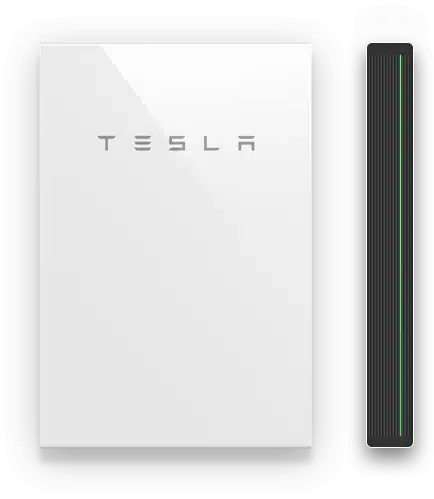
The Tesla Powerwall is an energy storage device designed to store electricity produced by solar panels or wind turbines. It can also be used to store electricity from your utility company if you use less during the day.
The Powerwall is bundled with other Tesla solar products, meaning it cannot be purchased separately. It has 13.5 kWh storage capacity and a 5 kW continuous power rating, Learn more on this in depth Tesla Powerwall review.
Tesla Powerwall Pros and Cons
Tesla is a company that has made a name for itself in the electric vehicle market. Furthermore, it is also attempting to leave a mark in the home battery storage business with some success. Let’s look at what makes Tesla’s Powerwall great and where it could improve.
Pros
- A 10-year warranty complements the long lifespan
- 90% overall efficiency rating can produce 100 percent of the power needed
- The system can be expanded to include up to 10 Powerwalls
Cons
- Tesla doesn’t sell Powerwall separately
- It’s more expensive than other types of solar batteries
- You may not be able to work with your existing solar panel system
What is an Enphase Battery?
Enphase Batteries are a little different than the Tesla Powerwall. The battery is attached to your solar panel, and when it charges during the day, it stores power for you to use at night. In this way, an Enphase Battery can provide backup power for your home when there’s no sun or when you need extra juice for appliances.
Enphase is also a leader in microinverter technology. For the past ten years, it has occupied the top spot in that market; and for energy storage applications (such as backup power), Enphase offers two products:
- Encharge 3: This product has a storage capacity of 3.36 kWh and a continuous power rating of 1.28 kW
- Encharge 10: This product has a storage capacity of 10.8 kWh and a continuous power rating of 3.84 kW
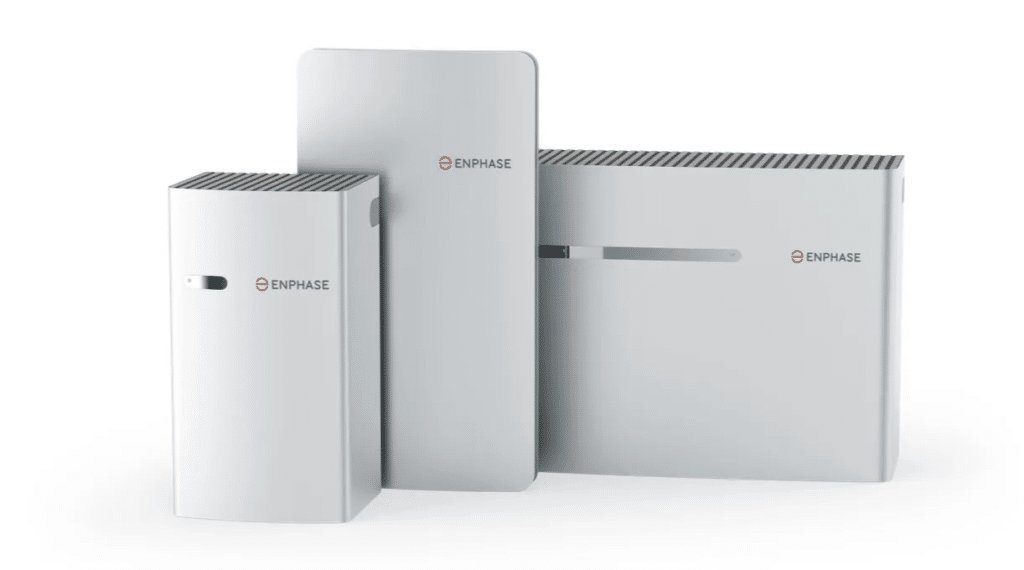
Enphase Battery Pros and Cons
The Enphase Battery uses a technology that has been introduced previously- a technology that allows homeowners to store solar energy generated by their solar panels. The technology is exciting but needs some explaining. So, let’s break down the advantages and disadvantages of this battery:
Pros
- A maximum of 40 Enphase batteries can be installed in a single setup
- The Enphase battery has lowered its prices in order to compete with Tesla Powerwall, as well as to provide affordable solutions
- Offers a standard 10-year warranty with an option to extend 5 years at extra charge
Cons
- Enphase Encharge is compatible only with M and IQ series microinverters from Enphase
- A bit smaller battery storage capacity compared to the Powerwall
- The Enphase Battery is not compatible with other inverters
Performance and Efficiency
Both Tesla Powerwall and Enphase Battery have seen notable improvements in their latest versions. Tesla Powerwall now offers increased energy storage capacity and enhanced integration with solar systems, providing more reliable backup power and greater efficiency. Enphase Battery has upgraded its microinverter technology, resulting in better energy conversion rates and more seamless integration with Enphase solar systems. Additionally, both batteries now include advanced energy management features, allowing users to optimize their energy usage and monitor performance through intuitive apps. These enhancements make both options more efficient and user-friendly for homeowners looking to maximize their energy storage solutions.
Key Differences
The Tesla Powerwall and Enphase Battery are systems that are very different from one another, with a common purpose- they can both be used to capture solar energy from the sun and provide backup power during blackouts. Before deciding which system will work best for you, learning the key differences between these two products is essential.
Battery Power
The Tesla Powerwall has a continuous 5,000-watt and 7,000-watt peak rating, which means it can help boost power when larger loads are switched on. And best of all? It’s expandable, so you’ll always have plenty of juice for whatever comes your way!
Enphase’s microinverters produce an average of 3.84 kilowatts and can peak at 5.7 kW for short periods, which is less powerful than Tesla’s inverter technology.
Capacity
The Enphase Battery has a storage capacity of 10.08 kWh, while the Tesla Powerwall 2 offers 13.5 kWh. This is more than enough to power your home during an outage with more efficiency per kilowatt hour (kWh) used in doing so. Many customers choose to power a portion of their homes with these batteries daily to reduce the widespread use of electricity and lower utility bills.
Warranty
The 10-year warranty Tesla offers on its batteries is relatively standard for the industry. The battery must be 70 percent charged when those ten years expire.
Enphase’s warranty lasts for ten years and can be extended to 15 through an additional agreement. The battery must hold at least 70% of its original charge after those 10 or 15 years, with “cycle” defined as once every 24 hours, during which power is drawn from the solar array. Read our article on the Enphase Encharge batteries to get an even more in depth opinion.
Price
The Tesla Powerwall is considered one of the most affordable lithium-ion batteries on the market. However, it’s only a couple hundred dollars less than Enphase Battery.
About a year ago, Enphase dropped its prices to compete with Tesla prices more directly, but now that gap has closed again.
The market is a bit of a wild west right now, so it’s hard to say whether Enphase or Tesla prices will be more competitive.
Weather Resistance
The Enphase battery can provide uninterrupted power during extreme weather conditions and maintain the ability to absorb energy. The battery has a feature that detects approaching bad weather (or any type of low-voltage situation) and prioritizes its energy storage, so you’re never left in the dark.
The Tesla Powerwall is a water-resistant battery that can withstand all types of weather, making it an ideal option no matter where you live, whether your area faces extreme heat, cold, wetness, or dryness.
Which One is Better?
Well, as usual, it all depends on your needs. If you’re searching for a battery that can provide backup power and keep your lights on during a blackout, either one of the two could work for you, depending on how much energy you want in storage. And if you’re looking for a battery that will help keep your home secure in case of a power outage by allowing you to run your solar panels without being connected to the grid, then either e will work well for this purpose as well.
While these are two different types of solar batteries, both can help reduce the cost of utilities. The Enphase battery and Tesla Powerwall have their own strengths; they’re just different ways to store power from your roof panels.
The Enphase battery is a great system for those who want a smaller, more portable battery that can be used for both solar and off-grid applications. The Powerwall is better suited for those who want to use solar power as their primary source of electricity but still want to keep a backup generator available in case of emergency.
Either way, it’s good to know you have options when it comes to how you generate energy at home!

Authored by Ryan Douglas
NRG Clean Power's resident writer and solar enthusiast, Ryan Douglas covers all things related to the clean energy industry.
